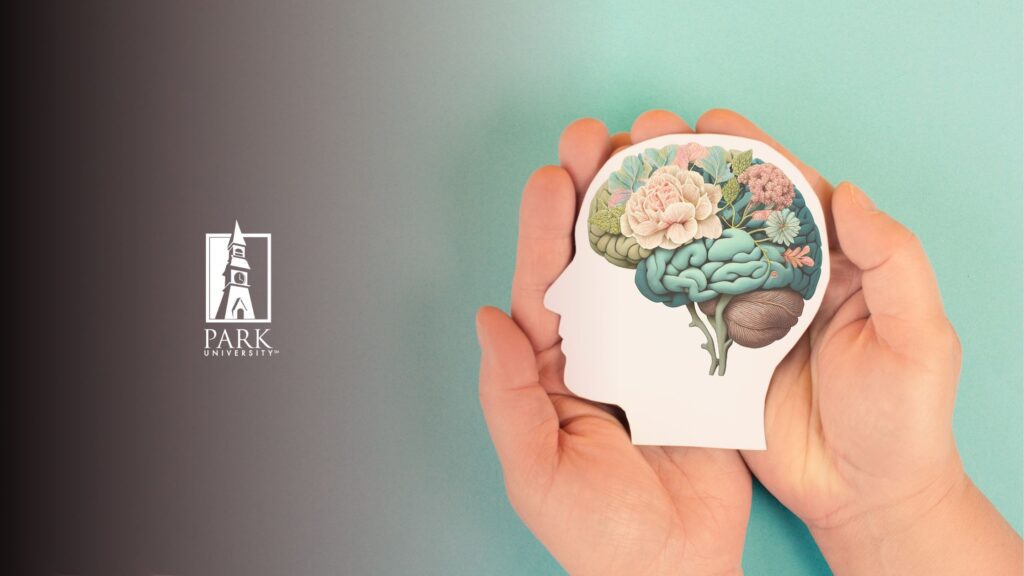Perceptions of mental health literacy, stigma, empathy, and confidence in managing patients with psychiatric disorders among doctors and nurses working in a Singapore emergency department – BMC Emergency Medicine

Report on Mental Healthcare Delivery and Alignment with Sustainable Development Goals
This report synthesizes findings from various studies to analyze the state of mental healthcare, particularly within emergency settings in Singapore. It evaluates current challenges and proposes strategic directions through the lens of the United Nations Sustainable Development Goals (SDGs), primarily focusing on SDG 3 (Good Health and Well-being), SDG 4 (Quality Education), SDG 8 (Decent Work and Economic Growth), and SDG 10 (Reduced Inequalities).
1. The Global and National Mental Health Landscape: A Call to Action for SDG 3
1.1. Global and Local Imperatives
The World Health Organization’s 2022 report underscores the urgent global need to transform mental health services for all, a cornerstone of SDG 3.4, which aims to promote mental health and well-being. In Singapore, the National Population Health Survey 2022 reveals significant local challenges, reinforcing the government’s decision to make mental health a key national priority. This commitment is demonstrated by plans to expand community care networks, directly supporting the achievement of universal health coverage as outlined in SDG 3.8.
1.2. The Emergency Department: A Critical Nexus for Mental Health Crises
Emergency Departments (EDs) have become a primary point of contact for individuals experiencing acute psychiatric distress. This trend is observed globally and locally.
- Studies indicate a high volume of ED visits by patients with mental health disorders.
- In Singapore, psychiatric referrals from EDs have long been a feature of the healthcare system.
- This influx places immense strain on EDs, which are often struggling with high patient loads, potentially compromising the quality and timeliness of care for all patients and hindering progress toward SDG 3.
2. Systemic Challenges to Achieving Equitable Mental Healthcare (SDG 10)
Several barriers impede the delivery of effective and equitable mental healthcare in emergency settings, creating inequalities that contravene the principles of SDG 10.
2.1. Stigma and Diagnostic Overshadowing
Stigma against mental illness remains a significant barrier within healthcare systems, leading to disparities in care.
- Provider Stigma: Healthcare providers are not immune to holding stigmatizing attitudes, which can negatively impact patient care and access. Studies in Singapore and internationally confirm the presence of associative stigma among healthcare professionals.
- Diagnostic Overshadowing: This phenomenon occurs when physical symptoms are misattributed to a patient’s pre-existing mental illness, leading to poorer physical health outcomes and representing a critical failure in providing equitable care as mandated by SDG 10.
- Cultural Factors: Ethnocultural beliefs, values, and norms, particularly within Asian contexts, can influence both help-seeking behaviors and the manifestation of stigma, creating complex challenges for a multicultural society like Singapore.
2.2. Provider Competency, Empathy, and Well-being (SDG 4 & SDG 8)
The capacity of the healthcare workforce is fundamental to a robust health system. Current challenges relate directly to education and working conditions.
- Competency and Confidence: Non-psychiatric ED staff often report a lack of confidence, knowledge, and skills in managing psychiatric patients, highlighting a critical gap in professional training that must be addressed to fulfill SDG 4 (Quality Education).
- Empathy and Burnout: Empathy is crucial for positive patient outcomes, yet it is often eroded by provider burnout and distress. High-pressure environments like the ED can lead to compassion fatigue, which diminishes the quality of care. Ensuring decent work and protecting the well-being of healthcare workers is essential for a sustainable health system, aligning with SDG 8.
- Paternalistic Care Models: Traditional, paternalistic doctor-patient relationships, while rooted in some cultural traditions, can conflict with modern principles of patient autonomy and shared decision-making, which are vital for empowering individuals in their own care.
3. A Strategic Framework for Improvement Aligned with the SDGs
Addressing these challenges requires a multi-faceted approach grounded in the principles of the Sustainable Development Goals.
3.1. Enhancing Education and Capacity Building (SDG 4)
To improve the quality of care, investment in the education and training of healthcare professionals is paramount.
- Develop and implement specialized training programs, such as high-fidelity simulations, for ED staff on managing mental health crises.
- Integrate comprehensive mental health literacy and anti-stigma education into the core curricula for all medical and nursing students.
- Promote continuous professional development focused on empathy, communication, and culturally competent care to ensure all professionals are equipped to meet diverse patient needs.
3.2. Strengthening Health Systems and Reducing Inequalities (SDG 3 & SDG 10)
Systemic changes are needed to ensure accessible, equitable, and high-quality mental healthcare for all.
- Integrate Mental Health into Primary Care: Bolster the capacity of primary care physicians and community clinics to manage common mental health conditions, reducing the burden on EDs and aligning with Singapore’s National Mental Health and Well-being Strategy.
- Combat Stigma: Launch targeted anti-stigma interventions within healthcare institutions to challenge negative attitudes and eliminate discriminatory practices like diagnostic overshadowing.
- Improve Care Pathways: Establish clear, efficient, and compassionate pathways for patients presenting with mental health issues, ensuring they receive the right care in the right setting.
3.3. Supporting the Healthcare Workforce (SDG 8)
A resilient and compassionate workforce is the foundation of a high-performing health system.
- Implement institutional strategies to prevent and mitigate burnout, compassion fatigue, and moral distress among healthcare professionals.
- Foster supportive work environments that value the mental and spiritual well-being of staff, recognizing its direct impact on their ability to provide empathetic care.
- Address systemic issues within the nursing profession, including compensation and career progression, to ensure it remains an attractive and sustainable career choice.
Analysis of SDGs, Targets, and Indicators
1. Which SDGs are addressed or connected to the issues highlighted in the article?
The provided list of references primarily focuses on mental health, healthcare services, and the well-being of healthcare professionals. Based on these themes, the following Sustainable Development Goals (SDGs) are addressed:
-
SDG 3: Good Health and Well-being
This is the most central SDG, as the references consistently discuss mental health conditions, substance use, access to psychiatric care, suicide prevention, and the overall quality of healthcare services. The articles cited cover global mental health reports (Ref 1), national health surveys (Ref 2), and the challenges in providing care in emergency departments (Refs 4, 6, 14).
-
SDG 4: Quality Education
This SDG is relevant through the emphasis on the training, knowledge, and skills of healthcare professionals. Numerous references point to the need for better education and training for doctors and nurses in handling psychiatric patients, improving mental health literacy, and building confidence in psychiatric assessments (Refs 22, 23, 24, 112, 114).
-
SDG 10: Reduced Inequalities
The articles address the stigma and discrimination faced by individuals with mental illness, which is a form of inequality. References discuss stigma among the public and healthcare providers (Refs 13, 27, 32, 45, 111), “diagnostic overshadowing” where physical ailments are missed in psychiatric patients (Refs 18, 19), and barriers to care that create unequal access (Ref 20, 45).
-
SDG 8: Decent Work and Economic Growth
This goal is connected through the focus on the healthcare workforce. The references touch upon the well-being of healthcare professionals, including issues like burnout, compassion fatigue, and empathy levels (Refs 8, 73, 98, 99). They also allude to challenges in the nursing profession, such as career development and retention (Refs 92, 93, 94), which are crucial for a sustainable health system and decent work.
2. What specific targets under those SDGs can be identified based on the article’s content?
Several specific targets can be linked to the issues discussed in the references:
-
Under SDG 3: Good Health and Well-being
- Target 3.4: “By 2030, reduce by one third premature mortality from non-communicable diseases through prevention and treatment and promote mental health and well-being.” This is directly supported by references concerning the promotion of mental health (Ref 1, 113), treatment of psychiatric patients (Ref 15), and attitudes towards suicidal behavior (Ref 16, 48, 89), which is a form of premature mortality.
- Target 3.5: “Strengthen the prevention and treatment of substance abuse…” This is explicitly mentioned in references covering “Mental Health and Substance Use” (Ref 1) and practitioner perspectives on caring for patients with substance use disorders (Ref 103).
- Target 3.8: “Achieve universal health coverage, including financial risk protection, access to quality essential health-care services…” This is reflected in the discussion of expanding community care networks, adding more GP clinics, and insurance coverage for mental health services in Singapore (Ref 3) and addressing barriers to accessing care (Refs 20, 45).
- Target 3.c: “Substantially increase health financing and the recruitment, development, training and retention of the health workforce…” The focus on training for emergency medicine trainees (Ref 23), junior medical staff (Ref 24), and the challenges confronting the nursing profession (Refs 92, 93) align with this target.
-
Under SDG 4: Quality Education
- Target 4.7: “By 2030, ensure that all learners acquire the knowledge and skills needed to promote sustainable development…” This is applicable through the concept of “mental health literacy” (Refs 17, 21, 31, 50) and the need to improve the knowledge, skills, and confidence of healthcare professionals to provide better care (Refs 24, 112, 114).
-
Under SDG 10: Reduced Inequalities
- Target 10.2: “By 2030, empower and promote the social… inclusion of all, irrespective of… disability… or other status.” The extensive discussion on reducing the stigma of mental illness (a form of disability) among the public and healthcare providers (Refs 27, 39, 45, 101) directly supports this target of promoting social inclusion.
- Target 10.3: “Ensure equal opportunity and reduce inequalities of outcome, including by eliminating discriminatory… practices…” This is highlighted by the concept of “diagnostic overshadowing,” where people with mental illness receive worse physical healthcare (Refs 18, 19), representing an inequality of outcome that needs to be eliminated.
3. Are there any indicators mentioned or implied in the article that can be used to measure progress towards the identified targets?
The list of references does not present data but mentions or implies several tools and metrics that serve as indicators for measuring progress:
- Suicide mortality rate (Indicator 3.4.2): Implied by the numerous studies on suicidal behavior, assessment, and attitudes (Refs 16, 48, 87, 88, 89, 90, 91).
- Prevalence of mental and substance use disorders: The “National population health survey 2022” (Ref 2) and the “World mental health report” (Ref 1) are cited, which are sources for such data.
- Coverage of essential health services (related to Indicator 3.8.1): Progress can be measured by the number of GP clinics added to the community care network (Ref 3) and the expansion of insurance coverage for mental health (Ref 3).
- Health worker density and distribution (Indicator 3.c.1): While not providing numbers, the articles on the challenges in nursing (Refs 92, 93, 94) and the need for trained staff imply that the number, training level, and retention rates of healthcare professionals are key indicators.
-
Measures of mental health literacy and stigma: The references explicitly name specific psychometric scales that can be used as indicators to track changes in attitudes and knowledge over time. These include:
- The “Mental Health Literacy Scale (MHLS)” (Ref 31).
- The “Opening Minds Stigma Scale for Health Care Providers (OMS-HC)” (Refs 13, 32).
- Surveys on public perception and stigma towards mental illness (Refs 27, 39, 55).
- Measures of healthcare provider empathy and well-being: The “Jefferson Scale of Physician Empathy” is mentioned multiple times (Refs 7, 62, 64, 68) as a tool to measure a key aspect of care quality. Studies on burnout and compassion fatigue (Refs 8, 98, 99) also imply the use of specific scales to measure workforce well-being.
4. Table of SDGs, Targets, and Indicators
| SDGs | Targets | Indicators (Mentioned or Implied in Article) |
|---|---|---|
| SDG 3: Good Health and Well-being |
3.4: Reduce premature mortality from non-communicable diseases and promote mental health and well-being.
3.5: Strengthen the prevention and treatment of substance abuse. 3.8: Achieve universal health coverage and access to quality essential health-care services. 3.c: Increase health financing, recruitment, development, training, and retention of the health workforce. |
– Suicide mortality rate (implied by Refs 16, 48, 87-91). – Prevalence of mental health conditions (from surveys like Ref 2). – Number of emergency department visits for mental health disorders (Ref 4). – Prevalence of substance use disorders (implied by Refs 1, 103). – Number of GP clinics in community mental health networks (Ref 3). – Percentage of population with insurance coverage for mental health (Ref 3). – Density and retention rates of healthcare professionals (implied by Refs 92, 93). – Scores on empathy scales like the Jefferson Scale of Physician Empathy (Refs 7, 62). |
| SDG 4: Quality Education | 4.7: Ensure all learners acquire the knowledge and skills needed to promote sustainable development, including well-being. |
– Scores on the Mental Health Literacy Scale (MHLS) for public and professionals (Ref 31). – Healthcare professionals’ self-reported confidence in psychiatric assessments (Ref 23). – Availability and content of emergency psychiatry training courses for residents and staff (Refs 114, 115). |
| SDG 10: Reduced Inequalities |
10.2: Empower and promote the social inclusion of all, irrespective of disability.
10.3: Ensure equal opportunity and reduce inequalities of outcome. |
– Scores on stigma measurement tools like the Opening Minds Scale for Health Care Providers (OMS-HC) (Refs 13, 32). – Data from surveys on public attitudes and stigma towards mental illness (Refs 27, 39, 55). – Rates of “diagnostic overshadowing” (misattribution of physical symptoms) in clinical audits (implied by Refs 18, 19). |
| SDG 8: Decent Work and Economic Growth | 8.5 & 8.8: Promote full and productive employment, decent work for all, and protect labor rights and promote safe and secure working environments. |
– Prevalence of burnout, compassion fatigue, and job satisfaction among healthcare professionals (measured by scales implied in Refs 8, 73, 98, 99, 100). – Attrition and retention rates for nursing and medical staff (implied by Refs 92, 93, 94). |
Source: bmcemergmed.biomedcentral.com

What is Your Reaction?
 Like
0
Like
0
 Dislike
0
Dislike
0
 Love
0
Love
0
 Funny
0
Funny
0
 Angry
0
Angry
0
 Sad
0
Sad
0
 Wow
0
Wow
0
























;Resize=805#)
























































